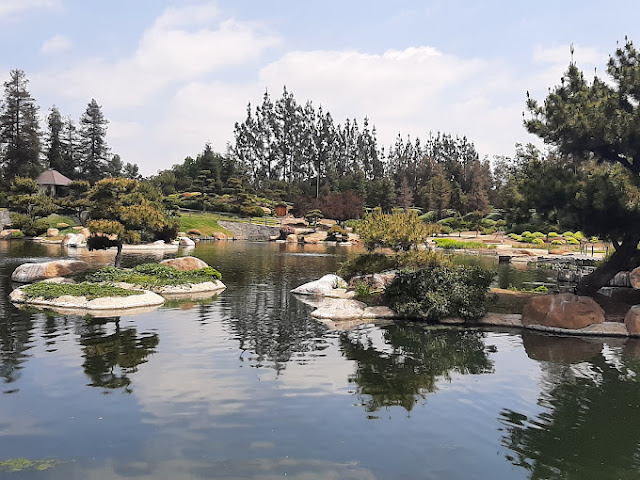The Japanese Garden: Experience Tranquility and Beauty in Lake Balboa, CA
Nestled within the bustling cityscape of Lake Balboa, California, the Japanese Garden offers a peaceful enclave that contrasts sharply with its urban surroundings. This meticulously crafted landscape, which draws heavily on traditional Japanese garden design principles, offers visitors a chance to experience both tranquility and beauty through its well-considered features, such as koi-filled ponds, elegantly arched bridges, and expertly pruned bonsai trees. As each element is designed to foster a sense of peace and contemplation, one might wonder what unique stories and inspirations lie behind the creation of such a harmonious retreat. How does this space reflect the broader cultural exchanges between Japan and America, and what can it teach us about the universal search for tranquility in our fast-paced modern world?
Exploring the Garden's Features
Nestled amidst lush foliage, the Japanese garden invites visitors to explore its meticulously arranged features, each designed to foster a sense of peace and introspection. As you meander along the winding paths, you are greeted by the serene views of koi ponds, their surfaces occasionally broken by the gentle splash of fish. Stone lanterns and meticulously pruned bonsai trees punctuate the landscape, casting soft shadows that play with the light.
The garden's design adheres to traditional Japanese aesthetics, emphasizing natural beauty and minimalism. Key architectural elements such as bridges, tea houses, and Shinto shrines contribute to the immersive experience, guiding visitors through a narrative of harmony and tranquility. Each season brings its own charm; cherry blossoms in spring provide a delicate canopy of pink, while autumn transforms the foliage into a vibrant tapestry of red, orange, and yellow.
For those seeking a deeper connection, the garden offers a place to partake in shared experiences. It's not just a scenic retreat but a living community space, inviting personal reflection as well as collective appreciation of nature's artistry, making everyone feel at home in its tranquil embrace.
Planning Your Visit
To ensure a fulfilling experience at the Japanese garden, careful planning is essential. Before visiting, check the garden's website for the latest hours and any special events that might enhance your visit. This garden is loved for its serene atmosphere, so choosing a time when it is less crowded, such as weekday mornings, can significantly enrich your experience.
Advance ticket purchases are often required, so secure your spot early. Also, consider the weather, as the garden presents a different charm in each season; spring's cherry blossoms and autumn's fiery maples are particularly spectacular.
When you plan your visit, allocate enough time to truly immerse yourself in the tranquility of the environment. Most visitors find that at least two hours allows for a leisurely walk through all the features, including the tea house and koi ponds, without feeling rushed.
Remember to bring a camera to capture the stunning scenery, but keep phones on silent to preserve the peaceful ambiance.
Lastly, engaging in the garden's guided tours can deepen your understanding and appreciation of Japanese garden design and philosophy, connecting you more closely with this exquisite example of natural beauty and artistic expression.
As the sun sets on the horizon, casting a golden hue over meticulously arranged landscapes, the Japanese Garden in Lake Balboa beckons travelers to uncover its hidden sanctuaries. Here, amidst the whispering winds and the gentle ripple of koi ponds, lies a profound invitation to explore, reflect, and connect with the essence of nature's timeless artistry. Will the serenity found within these gardens inspire a deeper contemplation of beauty? Only a visit can reveal the answer.


.jpg)

Comments
Post a Comment